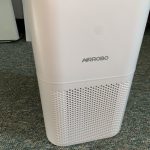
I was compensated for posting this article.
Sniffling, sneezing and a congested nose for most people indicate the flu. However, if it only happens at a specific time of the year, or after handling your pets, then it may suggest that you have an allergic reaction to something.
If you have kids, you need to know what is wrong with them so that you can find ways to deal with it before it gets out of hand. It is especially important if your child is allergic to a pet, because it may be difficult to separate them from that animal.
So what can you do?
In this article Mark Johnson, a leading expert on clean air and environment from ByPurify.com will tell us how with careful control you can eliminate and reduce the amount of pet hair, which is often a leading cause of allergies, and by investing in a reliable pet hair vacuum cleaner, you will be minimizing this issue.
Diving Deeper into Kids’ Pet Allergy Issues
Allergens are everywhere in our environment. Some will affect us when we inhale or ingest them while others just need to come in contacts with our skins. Once this happens, the symptoms can vary. When it comes to pets, you may notice your child having a runny or congested nose, sneezing or itching. In extreme cases, it may cause them to be short of breath. It happens because the body
will react to the allergen by flooding the bloodstream with histamine.
You need to keep in mind that animal dander is not the only things that can lead to allergic reaction. Dust mites, pollen, and mold are also common culprits. Additionally, having an animal with little fur also does not guarantee that your home is allergen free. It is because dander is the dead skin cells that your pet sheds. Their droppings and saliva may also be the cause of the reactions.
How Are Pet Allergies Tested?
Your allergist will perform proper tests for allergic reactions. However, you can do some testing of your own at home before-hand. It will involve monitoring how your child’s body reacts after spending some time with the pet. Additionally, you will also need to track them in a pet free environment. If they exhibit symptoms of an allergic reaction, then you will need to see a specialist for them to narrow down the allergen responsible.
A couple of people may be nervous to see a specialist in case the only course of treatment involves rehoming the pet. However, be talking to a professional you will be improving the quality of life of your child, and therefore, you will need to suck it up and make the appointment. You will notice that a scratch or prick test will be done using different allergens to determine which one your kid is reacting to. After confirming the allergen and reviewing your child’s medical history and taking into account your home situation the expert can then recommend the best course of treatment. The options available are prescription drugs and allergen immunotherapy.
What Are Your Options?
The only way you can ensure that your child does not have an adverse allergic reaction is to keep them away from any furry pets. However, that is not an option for most parents are willing to take. Therefore, here are some preventative measures you can choose to limit the level of allergens in your home;
Increase the number of times you vacuum and deep clean your house. It is especially important if you have carpeted floors.
Limit the movement of pets within your house and restrict them from going into bedrooms. The more time they spend outside your home, the better for you. Emphasize that your children have to wash up (and maybe also change their clothes) after touching the pets.
To thoroughly clean the house you might need to replace your vacuum cleaner with something better suited for pet hair removal. You can also try in a good quality HEPA filter air purifier to help you with the pet dander problem.
Hopefully with some preventative steps you can enjoy the wonder that pets bring!
Hi there! I am Emily Evert, the owner of Emily Reviews. I am 28 and live in a small town in Michigan with my boyfriend Ryan and our two pugs. I have a large family and I adore my nieces and nephews. I love reading memoirs, and learning about child development and psychology. I love watching The Game of Thrones, Teen Mom, Sister Wives and Veep. I like listening to Jason Isbell, John Prine, and other alt-country or Americana music. I created Emily Reviews as a creative outlet to share my life and the products that I love with others.
This post currently has 7 responses.
-
My grand kids have terrible allergies since they moved back here. I thought it was where we live,but they have 2 dogs. Thanks for the info.
-
Great advice. I have allergies to pet dander and fur myself.
-
This is great information to know, thank you so much for sharing! It is really helpful to know how to deal with allergies to pets in the home.
-
Very helpful suggestions. We use an air purifier and keep dogs out of bedrooms and changed carpeting to wood flooring, which has made a difference.
-
I don’t have pet allergies but so helpful for those that do.
-
We have an adult with pet allergies in our multi-pet household so this information is helpful. I have wondered how effective pet related vacuum cleaners are.








This is very helpful information. My family is very allergic to different things. We are lucky that we are not having allergic reactions to our cat though.